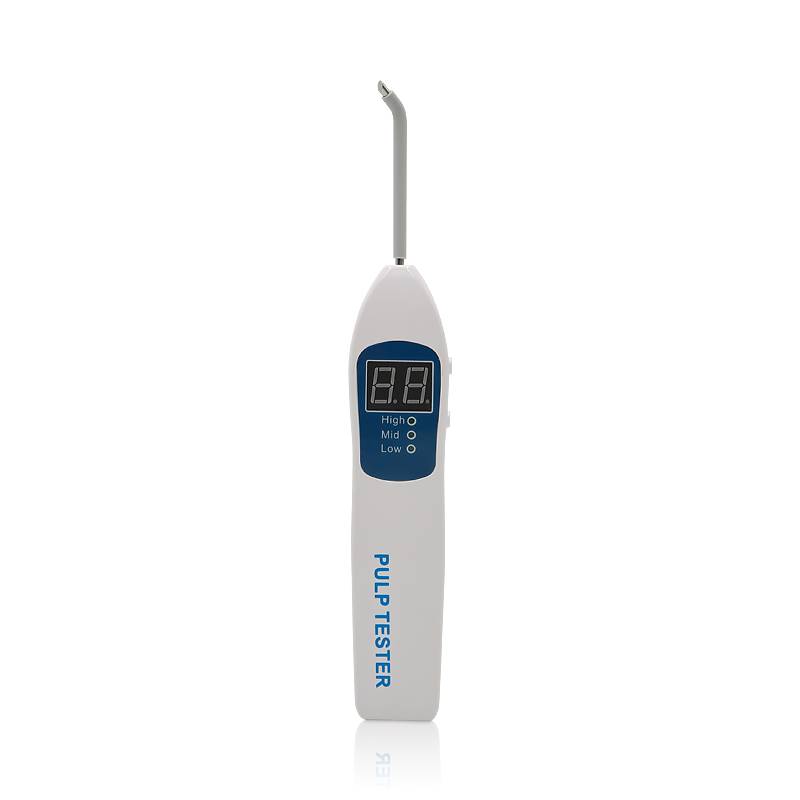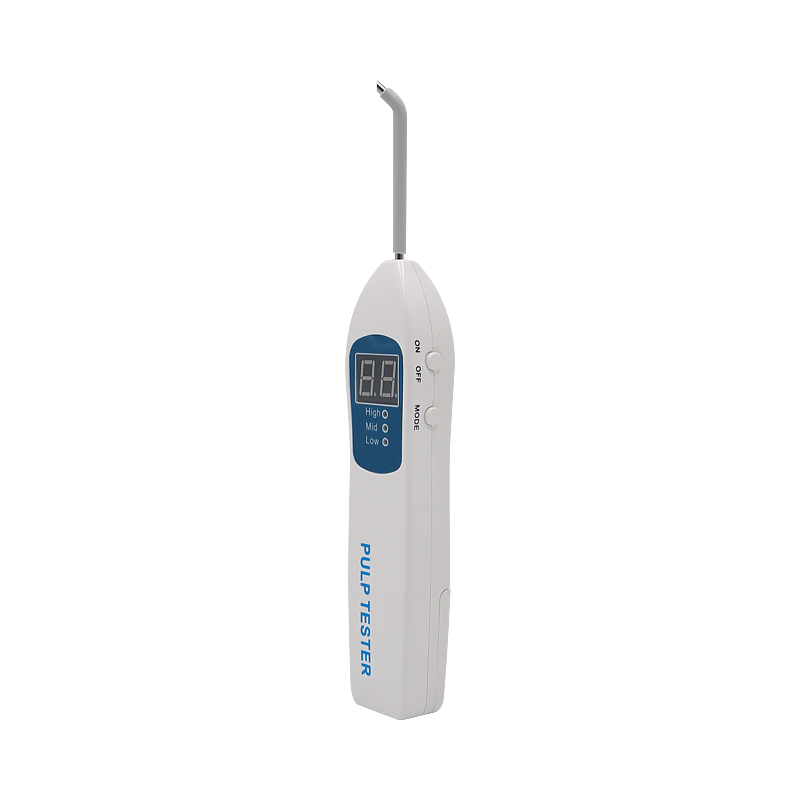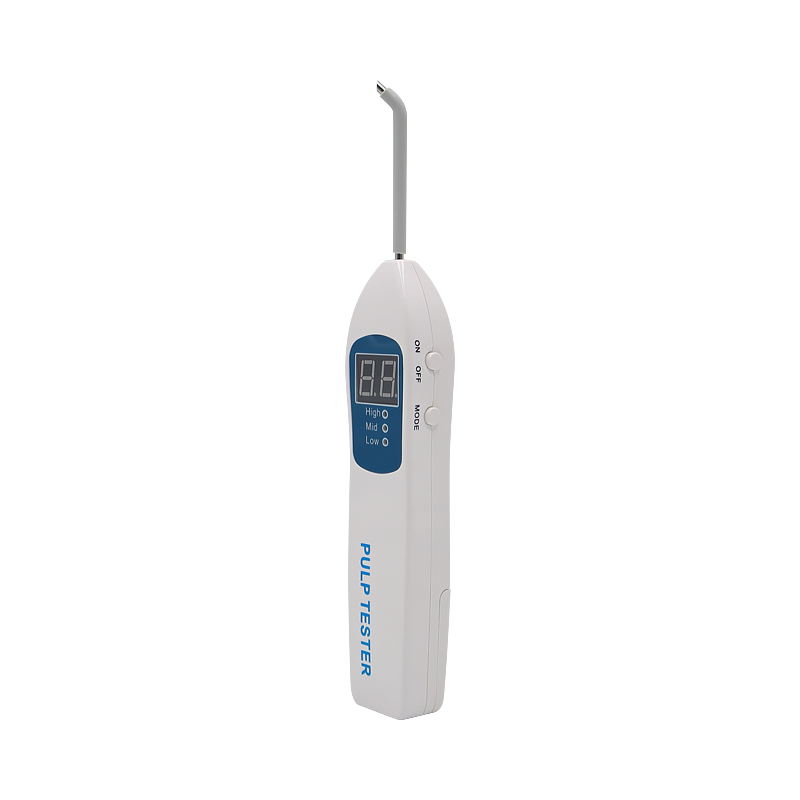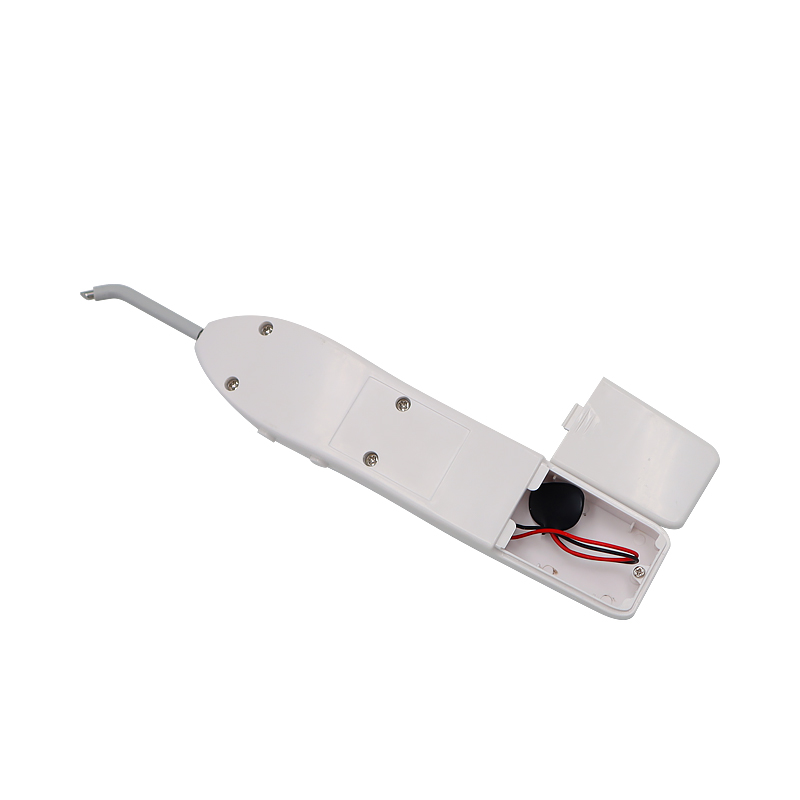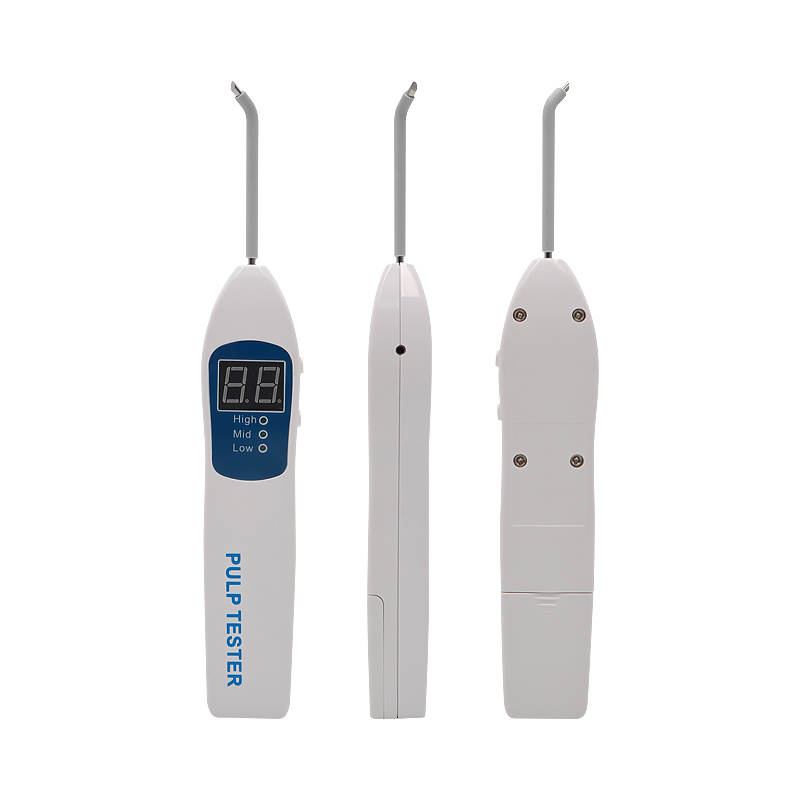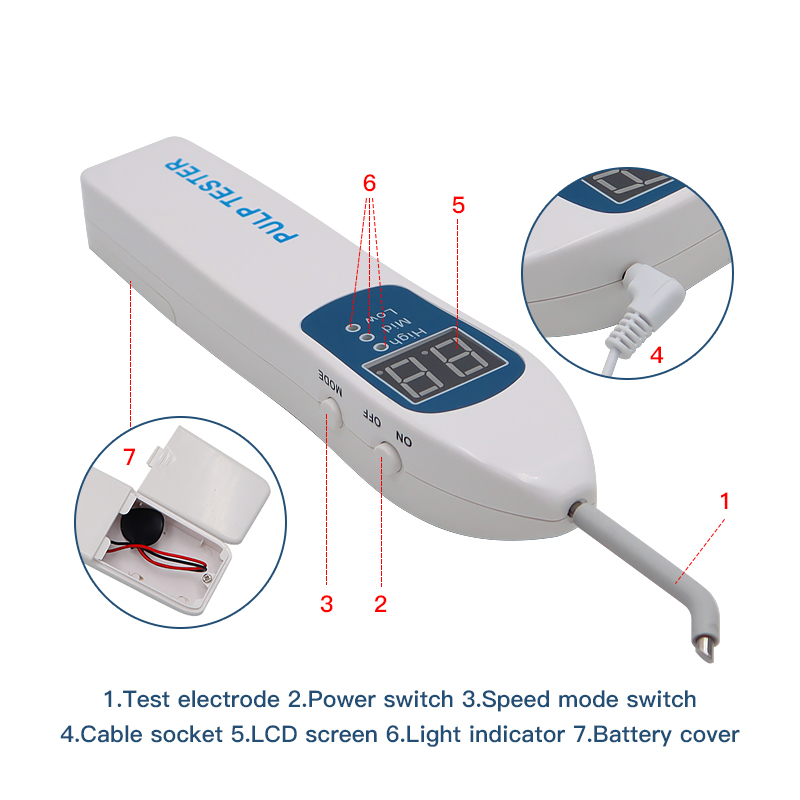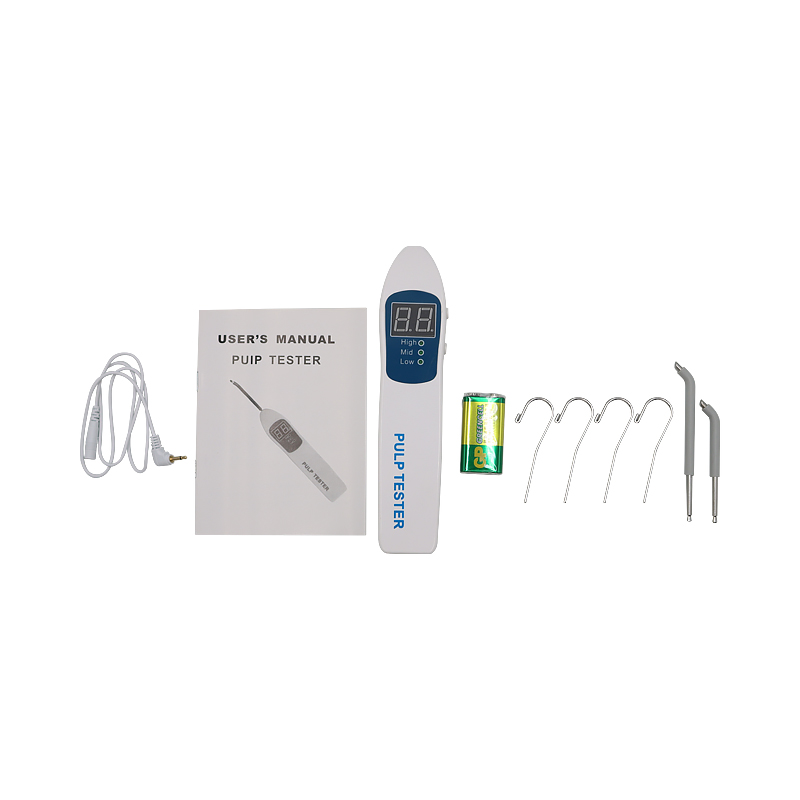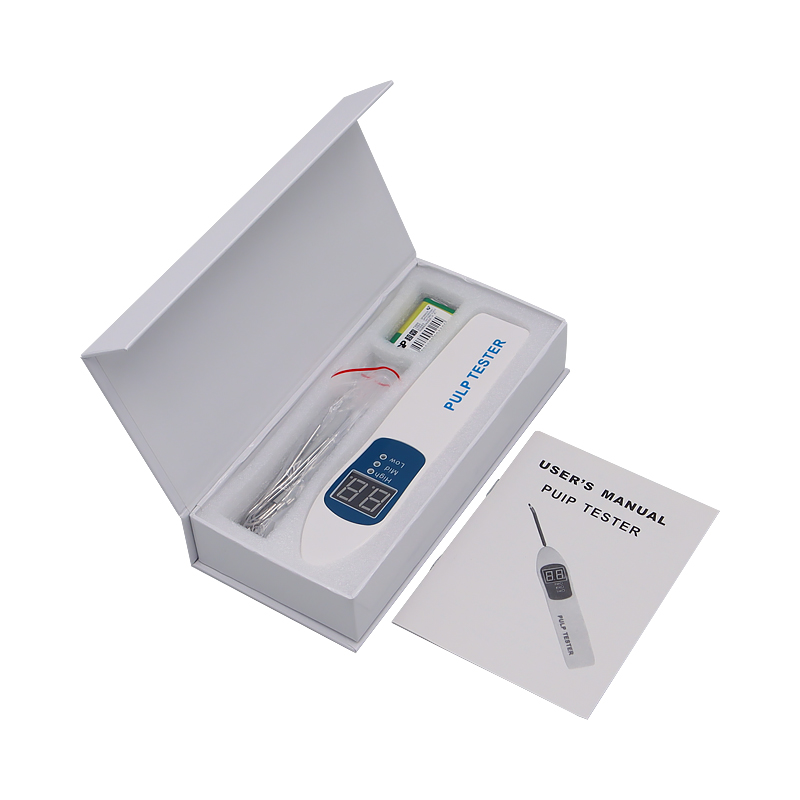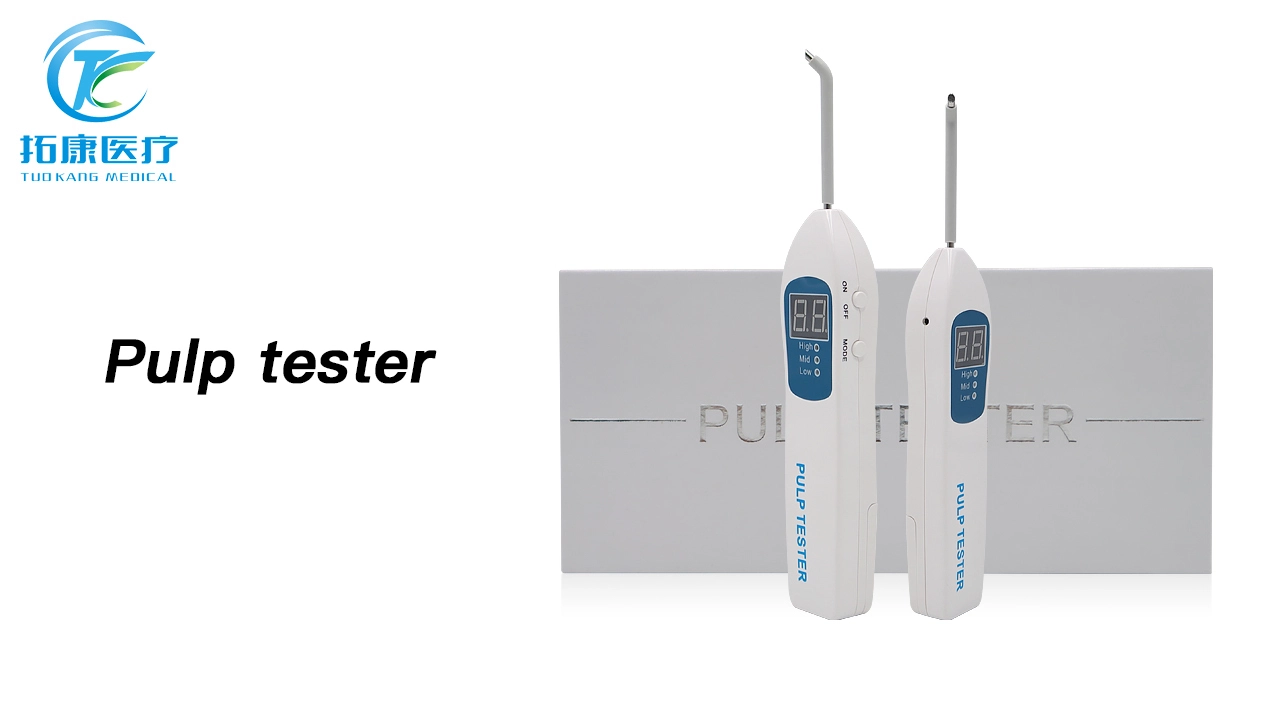Dental Electric Pulp Tester Testing Oral Teeth Nerve Vitality Endodontics Manufacturer
Dental electric pulp testers are a valuable tool in illustrating pulp health. Dental pulp testers fall into two categories: sensibility tests or vitality tests. Sensibility tests include thermal and electric tests; these are based on sensory response. Vitality tests include tests like laser doppler flowmetry or pulse oximetry. Sensibility tests are commonplace in clinical situations and although the prospect of vitality tests look promising, false results can lead to misdiagnosis and incorrect or unnecessary treatment. Dental pulp testers can also be combined with features like apex locators. Whether your dental practice chooses a sensibility tester or a vitality tester for a dental pulp tester, be sure the vendor chosen is reputable.
| Power supply: | AC110-220 50-60Hz |
| Power: | 10W |
| Packing size: | 165*125*38mm |
| Temperature: | -10~+70℃ |
| Humidity: | ≤95%RH |
| Pressure: | 70~106kpa |
| Standard Accessories: | Main unit Test electrode 2pcs Test cable 1pc Stainless hook 4pcs |
Features for pulp tester:
1. Preset speed mode (high-mid-low speed)
2. Gentle, pulsed stimulus begins to increase at a rate
3. Specifically designed for patient comfort
4. If the patient indicates perception, simply release the button. The stimulus stops immediately, but the numbers remain frozen on the face for about 3 minutes
5. Convenient to operate
Maximum stimulus-- -80.Between 00-40, the patient feels ache and anesthesia, alive teeth nerve
Between 40-80, with above-mentioned reaction, part of teeth nerve dead 80, no above-mentioned reaction, dead teeth nerve
6.The device turns itself off in 3 minutes after operation (save the batteries)
7. Battery-operated, Standard 9-Volt batteries, Extremely economical
